 
|
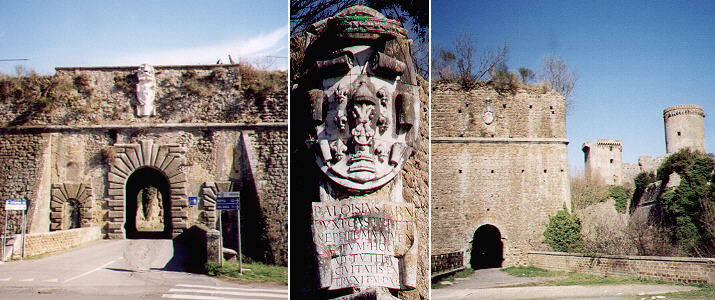 | ||
The entrance to Nepi is protected by the fine XVIth century walls built by the Farnese. The coat of arms on one corner of the walls makes reference to the Farnese as Dukes of Nepi and Dukes of Castro, another family fief near the Bolsena Lake. These walls are only a few hundred meters long, because the ravines around Nepi are so deep that they did not require walls.
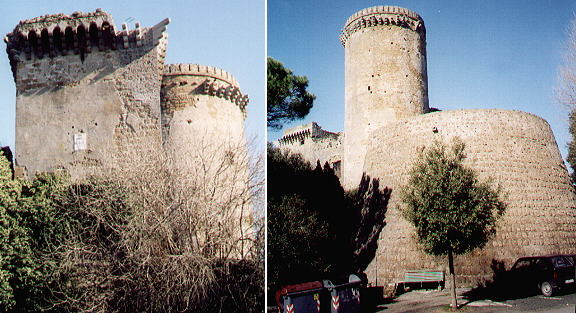 | ||
In addition to the Renaissance (outer) walls Nepi has another curtain of walls, in part dating back to the Etruscan time. These walls are dominated by two medieval towers which were strengthened by Cardinal Rodrigo Borgia (who became Pope Alexander VI in 1492).
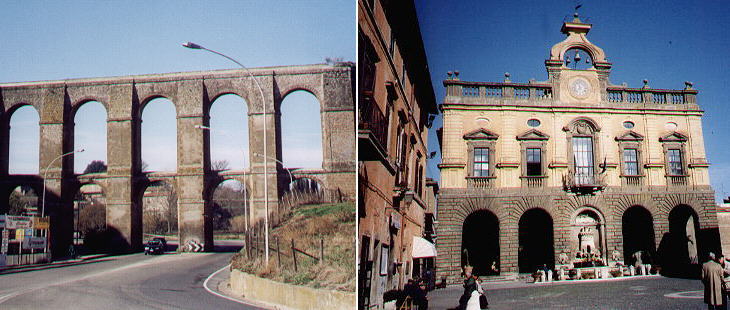 | ||
In 1649 Pope Innocentius X waged war against the Farnese and he brought back their fiefs under the control of the State of the Church. In the early XVIIIth century an aqueduct improved the living conditions of the inhabitants of Nepi. The architect Filippo Barigioni completed the aqueduct in 1727 and he modified the Palazzo Comunale by inserting a monumental fountain in its fašade.
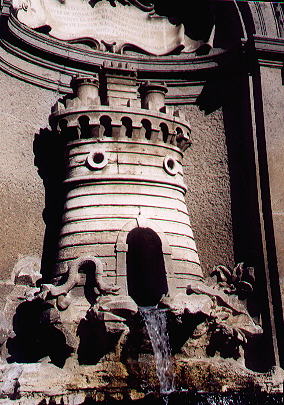 | ||
The fountain is clearly inspired by many other baroque fountains. The tower and the vipers are a reference to the heraldic symbols of Pope Benedictus XIII (1724-30).
Castel Sant' Elia
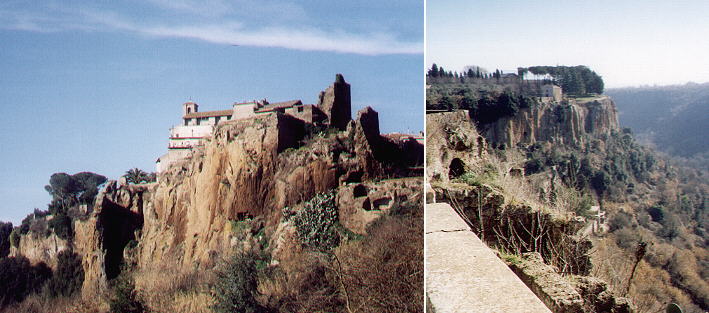 | ||
The ravine near which Castel Sant'Elia is built is not the Grand Canyon, nonetheless it has some spectacular views. The site was chosen by several hermits who lived in caves cut into the rock.
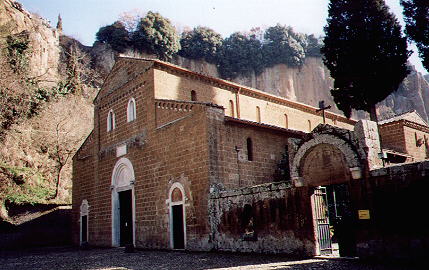 | ||
The Romans built a Temple to Diana on a little terrace below Castel Sant'Elia, which in 520 was turned by St Benedict into a church which was rebuilt in the XIth century in Romanesque style.
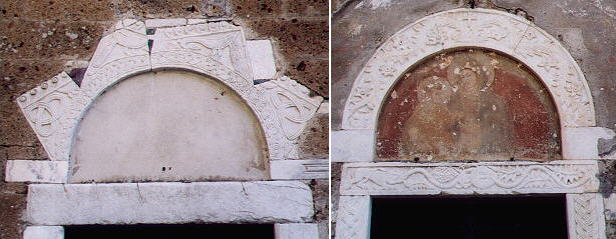 | ||
The left side entrance is decorated with fragments of reliefs which once were in the ancient church, while the right side entrance is decorated with medieval reliefs.
From Civitavecchia to Civita Castellana - other pages:
Civitavecchia, Allumiere and Tolfa
Oriolo Romano and Caprarola
Sutri and Monterosi
Civita Castellana
some other walks:
Walks with Ferdinand Gregorovius in the Roman countryside
In and about Viterbo
A walk to Porta Furba
Via Appia Antica from Cecilia Metella to Torre in Selci
Via Appia Antica from Torre in Selci to Frattocchie
See my Home Page on Baroque Rome or my Home Page on Rome in the footsteps of an XVIIIth century traveller
All images © 1999 - 2003 by Roberto Piperno. Write to romapip@quipo.it
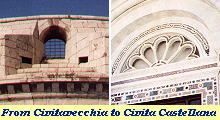 Nepi and Castel Sant' Elia
Nepi and Castel Sant' Elia